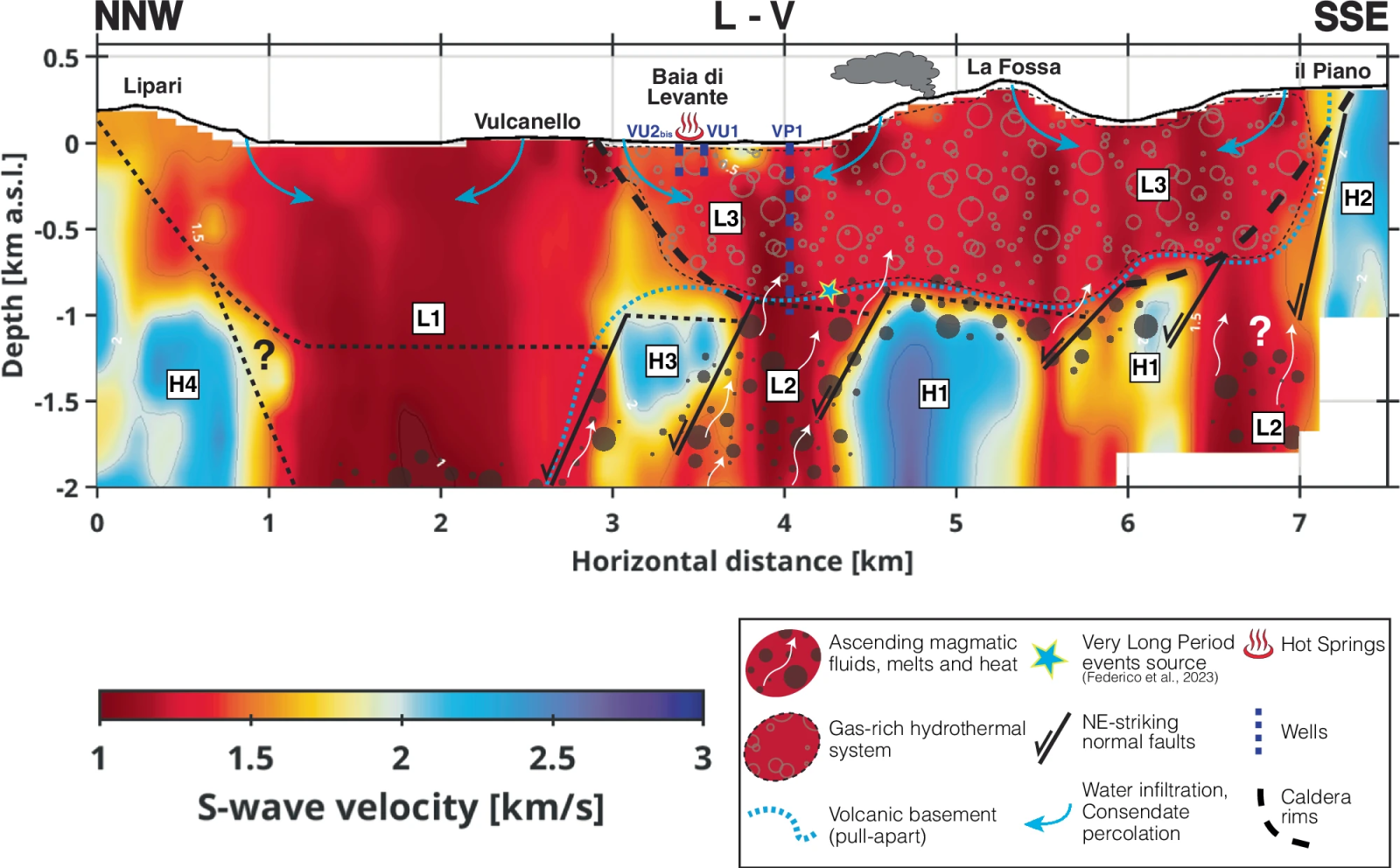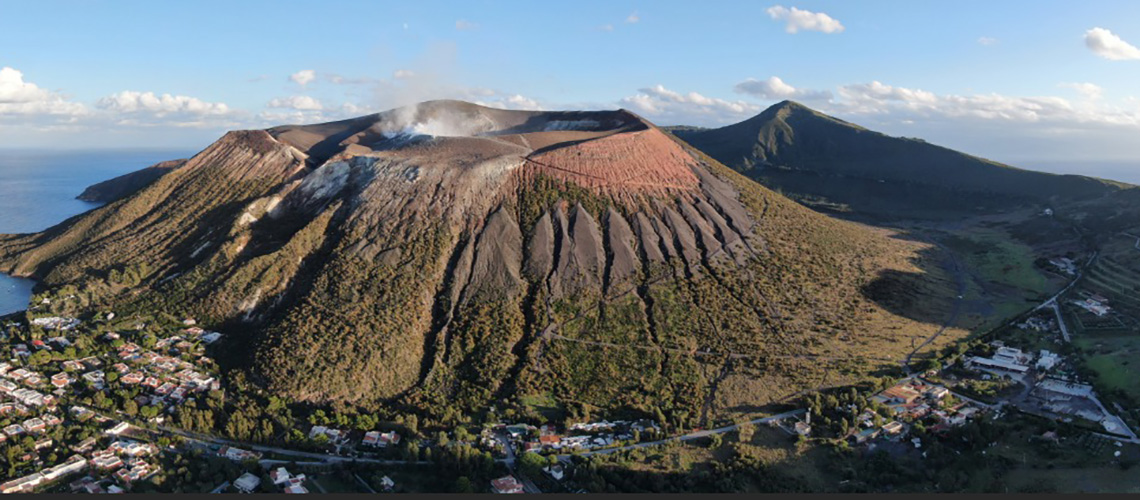Follow us on Google News (click on ☆)
Volcanic eruptions can have dramatic consequences. But how can we anticipate this phenomenon, which prepares itself dozens of kilometers underground? A team from the University of Geneva, in collaboration with the National Institute of Geophysics and Volcanology (INGV) in Italy, has successfully modeled the interior of the Vulcano volcano, north of Sicily, in 3D.
This image of unprecedented precision was obtained by combining seismic sensors and artificial intelligence. Published in Nature Communications, these results represent a real advance for understanding volcanic structures and, potentially, for risk management.

Vertical cross-section of the S-wave velocity model, parallel to the Aeolian-Tindari-Letojanni fault system, between Lipari and Vulcano. Anomalies are classified as high (H) and low velocities (L). The fractured volcanic basement (H1–H3), affected by normal faults, releases fluids or magmas towards a potential reservoir (L2) and its feeding system. These fluids rise along subvertical structures to the active hydrothermal system (L3), identified by summit fumaroles, coastal hot springs, and VLP-type seismic signals (blue star). The cross-section is limited to areas where resolution remains sufficient, above 1 km below sea level.
Our planet has more than 1,500 active volcanoes, but only 30% of them are well known to scientists. Yet more than 800 million people live near these often unpredictable giants. Developing devices to better understand and anticipate eruptions is therefore a major research challenge.
This is an advance comparable to the transition from ultrasound to MRI in medicine.
"Until now, volcano-seismology has mainly focused on seismic signals located just beneath volcanoes. Large-scale studies have certainly made it possible to outline their internal structure, but very few have gone to see in detail what really happens at depth," says Douglas Stumpp, a PhD student in the Department of Earth Sciences, Section of Earth and Environmental Sciences, at the Faculty of Science of UNIGE, and first author of the study. This situation is explained by the unique character of each volcano and the inaccessibility of the areas where eruptions prepare.

The Vulcano volcano, located on the eponymous island north of Sicily, entered an active phase in late 2021.
© Douglas Stumpp
An "image" of unprecedented precision
Thanks to recent work carried out within the team of Matteo Lupi, associate professor in the Department of Earth Sciences, Section of Earth and Environmental Sciences, at the Faculty of Science of UNIGE, Douglas Stumpp managed to obtain a three-dimensional, high-resolution image of the internal structure of Vulcano. Located on the eponymous island north of Sicily, this volcano entered an active phase in late 2021 characterized by so-called "very long period" seismic events, indicating the circulation of magma and gas in the volcanic system.
"We used a nodal array-assisted ambient seismic noise tomography device. To process the data, we used neural networks, a technology that allows us to 'X-ray' volcanoes. This work was carried out as part of the joint master's program of the Lémanic School of Earth Sciences (ELSTE), associating the universities of Geneva and Lausanne," explains the researcher. With the support and collaboration of INGV, the scientists deployed about 200 portable seismic sensors on the island. For one month, these state-of-the-art seismometers recorded the natural vibrations of the ground across a full range of frequencies.
It is known, for example, that certain waves - so-called secondary seismic waves - propagate at low speed when they pass through fluid-rich areas, which allows the detection of the potential presence of magma. This massive volume of data was then processed by the UNIGE supercomputer ("Yggdrasil"). "Tomographic technology has been available for about twenty years. But deploying such a large number of sensors and processing their data with AI is a real novelty," specifies Matteo Lupi, who led this work.
Thanks to this information, the team was able to precisely model the internal structure of Vulcano. This modeling also highlights the distribution of magmatic fluids in its upper part. "This is an advance comparable to the transition from ultrasound to MRI in medicine," says the researcher.
From knowledge to prevention
These results do not yet allow for predicting an eruption, but they represent a real leap forward in understanding the internal dynamics of volcanoes. "If we could process in real time the data from nodal ambient seismic noise tomography, assisted by neural networks, we could analyze the behavior of each zone of the volcanic system as it happens - and thus design dynamic and adaptable evacuation plans.
The ultra-fast processing of such massive volumes of data still represents a major technical obstacle, but the integration of machine and deep learning, as demonstrated in this study, proves that this perspective is now becoming feasible," concludes Douglas Stumpp.